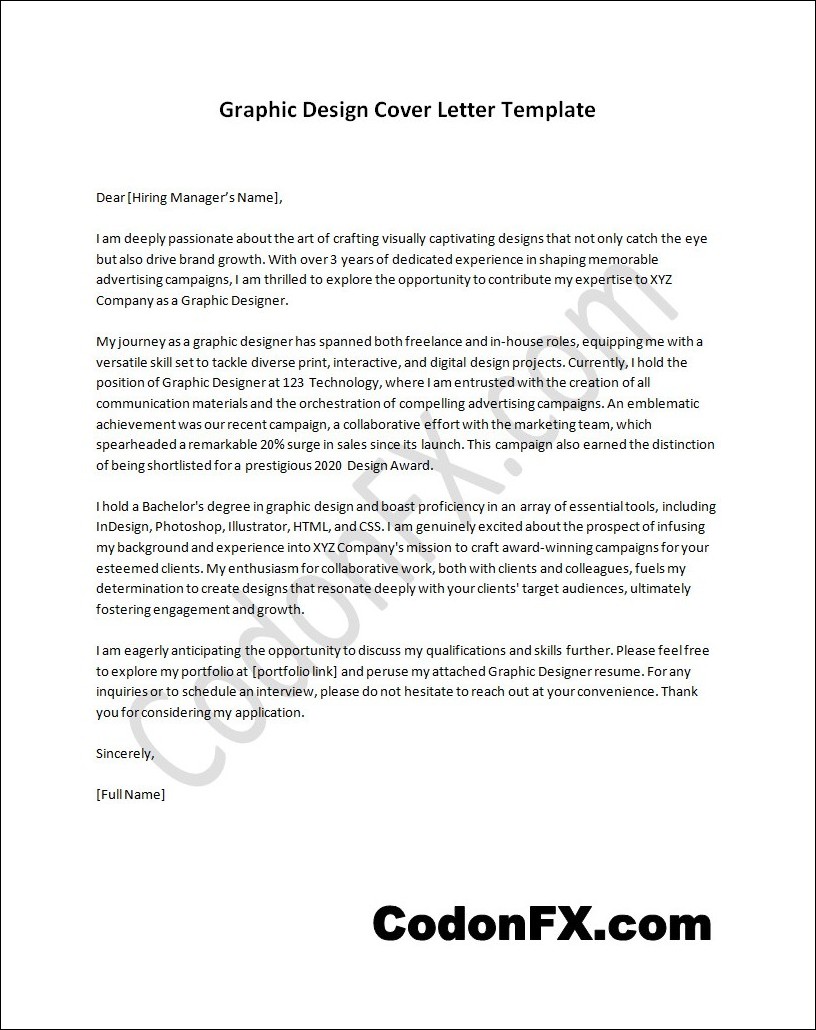
What is a graphic design cover letter?
A graphic design cover letter is a formal document that accompanies a graphic designer’s resume when applying for a job. It serves as an introduction to the employer and highlights the designer’s skills, qualifications, and experiences. The purpose of a graphic design cover letter is to showcase the designer’s creativity and attention to detail, while also providing a glimpse into their personality and work ethic.
One of the main benefits of a graphic design cover letter is that it allows the designer to stand out from other applicants. By customizing the letter to the specific job and company, the designer can demonstrate their genuine interest and enthusiasm for the position. Additionally, the cover letter provides an opportunity to explain any gaps in employment or unusual career choices, which may not be apparent from the resume alone. This can help address any concerns the employer may have and increase the chances of securing an interview.
Moreover, a well-written graphic design cover letter can help the designer showcase their communication skills. It allows them to articulate their ideas, explain their design process, and demonstrate their ability to effectively convey information. This is particularly important in the field of graphic design, where clear and concise communication is crucial. The cover letter also provides an opportunity to include a link to an online portfolio or website, where the employer can view the designer’s work in more detail. This can further enhance the designer’s chances of getting noticed and ultimately landing the job.
What to include in a graphic designer cover letter?
1. Primary contact information
When writing a graphic designer cover letter, it is important to include your primary contact information at the top of the letter. This should include your full name, phone number, email address, and mailing address. Providing this information allows the employer to easily contact you for further communication or an interview. Make sure to use a professional email address and phone number that you regularly check.
2. Professional greeting
Start your cover letter with a professional greeting, such as “Dear Hiring Manager” or “To Whom It May Concern.” Avoid using generic greetings like “Dear Sir/Madam” as it lacks personalization. If possible, try to find the name of the person who will be reviewing the cover letter and address them directly. This shows that you have taken the time to research and personalize your application.
3. Previous design experience
In your graphic designer cover letter, highlight your previous design experience. Mention any relevant positions you have held, such as internships or freelance work. Describe your role in these positions and the projects you worked on. If you have any notable achievements or accomplishments, such as awards or recognition, be sure to mention them. This helps to showcase your skills and experience in the field.
4. Relevant graphic design skills and qualifications
Emphasize your relevant graphic design skills and qualifications in your cover letter. This may include proficiency in graphic design software, such as Adobe Creative Suite, and knowledge of design principles and typography. Mention any certifications or courses you have completed that are relevant to the field. This demonstrates your expertise and shows that you have the necessary skills to excel in the role.
5. Examples of your previous clients or graphic design projects
Include examples of your previous clients or graphic design projects in your cover letter. This could be in the form of a portfolio or links to your online portfolio website. Discuss the type of projects you have worked on and the results you achieved. This allows the employer to see your design style and capabilities.
6. Reasons for applying
Finally, explain your reasons for applying to the specific graphic design position. Discuss why you are interested in the company and how your skills align with their needs. Show enthusiasm for the role and explain how you can contribute to the company’s success. By expressing your genuine interest and passion, you make a compelling case for why you are the right candidate for the job.
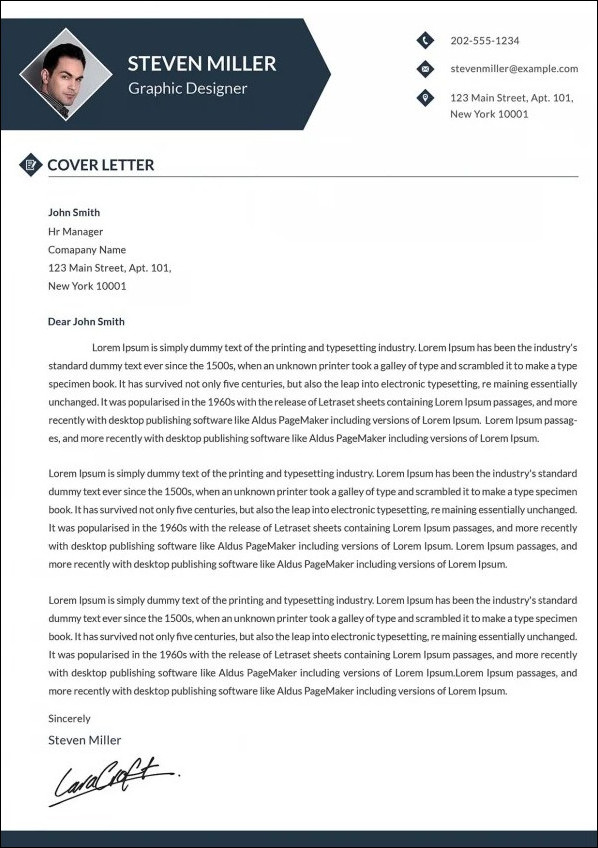
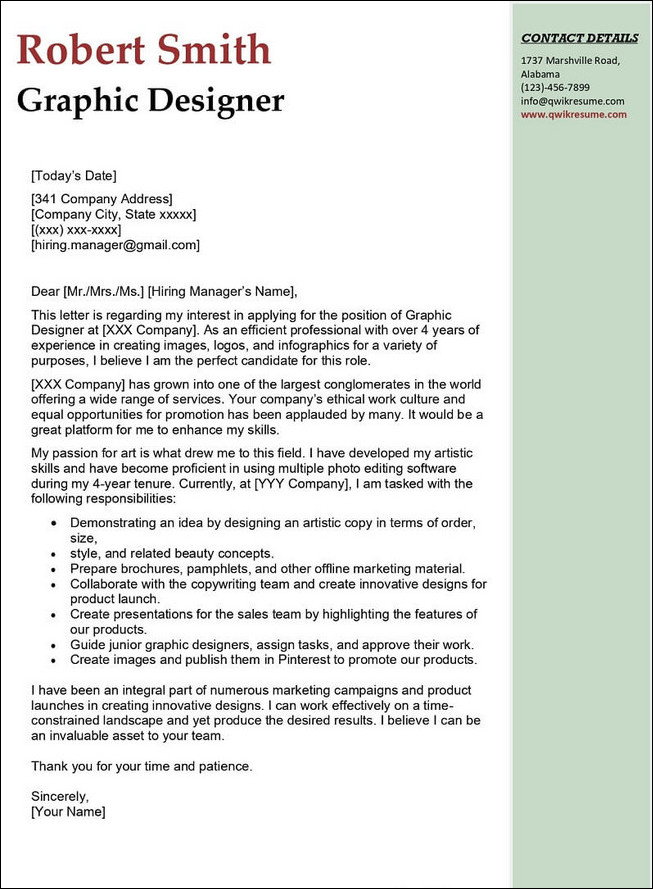
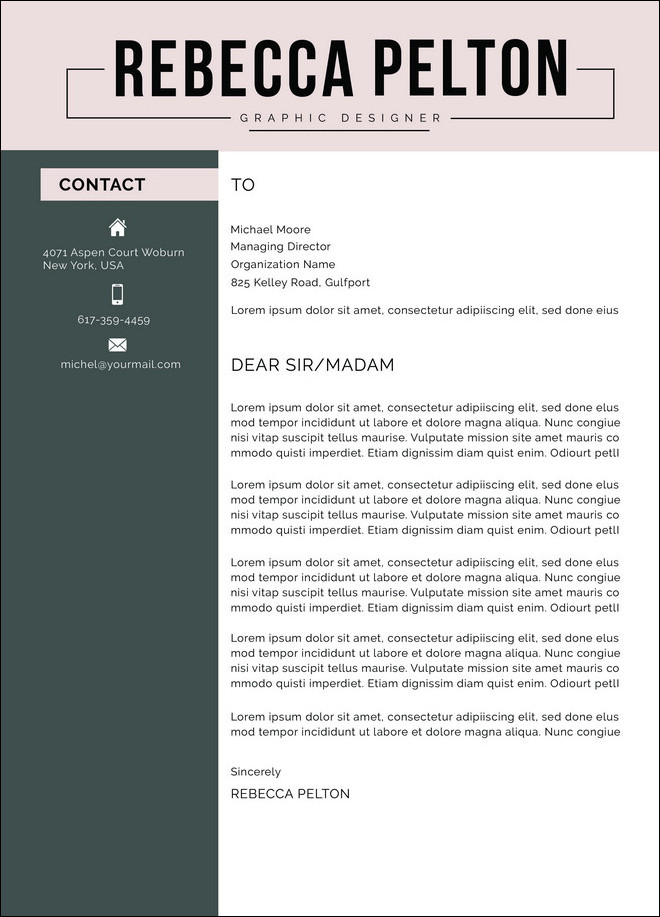
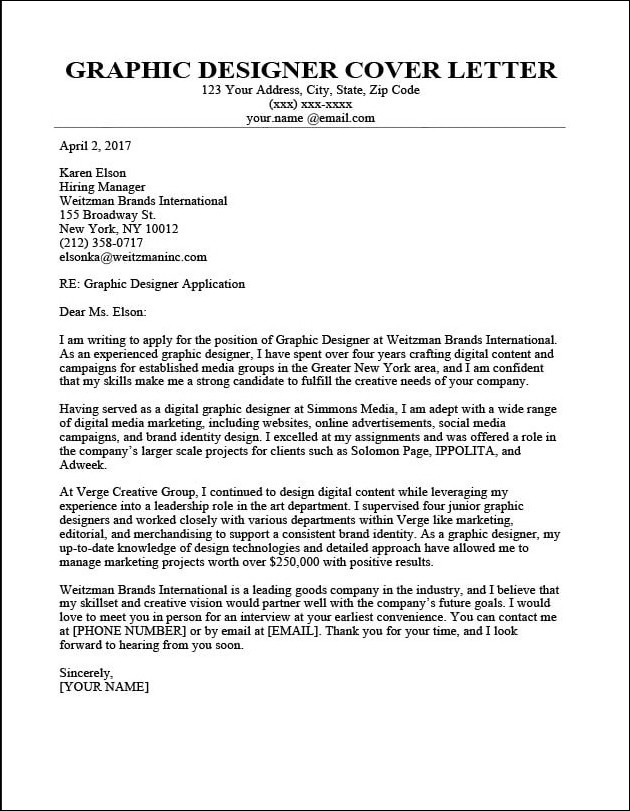
How do I write a cover letter for a graphic design job?
Writing a cover letter for a graphic design job requires careful attention to detail and a creative approach. Here are some steps to help you write an effective cover letter:
1. Choose your fonts and formatting
When it comes to graphic design, even the smallest details matter. Choose a clean and professional font for your cover letter, such as Arial or Helvetica. Use appropriate formatting techniques, such as bullet points or bold text, to highlight important information.
2. Create a header
Start your cover letter with a header that includes your name, contact information, and the date. This will make it easy for the employer to quickly identify who you are and how to reach you.
3. Greet the reader
Address your cover letter to the hiring manager or the person responsible for hiring. If the job posting does not include a specific name, do some research to find out who it is. A personalized greeting shows that you’ve taken the time to tailor your application to the company.
4. Mention your desired job title
In the opening paragraph, clearly state the position you are applying for. This helps the employer understand your intentions right from the start and ensures that your application is directed to the correct department.
5. Highlight your graphic design skills and qualifications
In the body of your cover letter, showcase your relevant skills and qualifications. Use specific examples to demonstrate your expertise in areas such as logo design, typography, or digital illustration. Mention any relevant software proficiency, such as Adobe Creative Suite or HTML coding.
6. Craft a memorable closing paragraph
End your cover letter with a strong closing paragraph that summarizes your qualifications and expresses your enthusiasm for the position. This is your final opportunity to make a lasting impression on the employer, so make it count.
7. Include a professional closing statement
Wrap up your cover letter with a professional closing statement, such as “Sincerely” or “Best regards,” followed by your full name. Leave space for your signature if you are submitting a physical copy of your cover letter.
Graphic Design Cover Letter Template | Word – Download